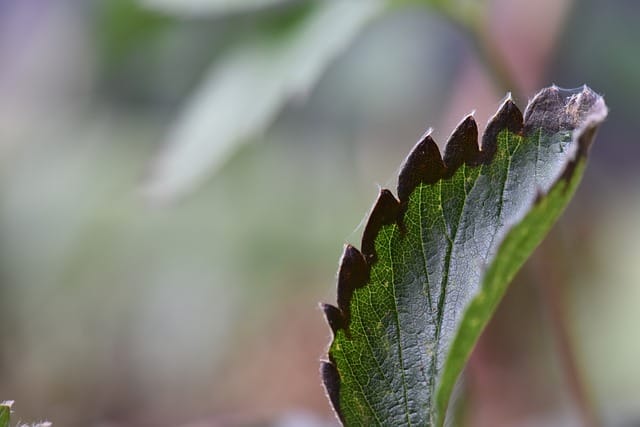Fighting gardening diseases: Bacterial blight
Bacterial blight is a common and destructive plant disease that affects a wide range of garden plants

In this article:
- Introduction to Bacterial Blight in Gardens
- Understanding Bacterial Blight: Causes and Symptoms
- Identifying Common Plants Affected by Bacterial Blight
- Prevention and Cultural Practices to Minimize Bacterial Blight
- Using Disease-Resistant Cultivars and Hybrids
- Proper Sanitation and Disinfection Techniques
- Chemical Control Methods for Bacterial Blight
- Organic Approaches to Combat Bacterial Blight
- Biological Control Options for Bacterial Blight
- Integrated Pest Management Strategies for Bacterial Blight
- Dealing with Bacterial Blight in Specific Garden Areas (e.g., vegetable gardens, flower beds)
- Case Studies and Success Stories in Bacterial Blight Management
- Future Directions: Research and Innovations in Bacterial Blight Control
- Conclusion and Key Takeaways for Fighting Bacterial Blight in Gardens
Introduction to Bacterial Blight in Gardens
Bacterial blight is a common and destructive plant disease that affects a wide range of garden plants. This article aims to provide a comprehensive guide on understanding, preventing, and managing bacterial blight in your garden.
Understanding Bacterial Blight: Causes and Symptoms
Bacterial blight is mainly caused by various bacterial pathogens, including Xanthomonas and Pseudomonas species. It spreads through infected plant debris, contaminated soil, or insect vectors. Understanding the causes and symptoms of bacterial blight is crucial for effective management.
Identifying Common Plants Affected by Bacterial Blight
Bacterial blight can affect a wide range of garden plants, including vegetables, ornamentals, and fruits. This section will help you identify the common plant species susceptible to bacterial blight, enabling you to take necessary precautions in your garden.
Prevention and Cultural Practices to Minimize Bacterial Blight
Preventing bacterial blight involves implementing cultural practices that create conditions unfavorable for pathogen growth. This section will discuss various preventive measures, such as crop rotation, proper watering techniques, and optimizing plant nutrition.
Using Disease-Resistant Cultivars and Hybrids
Plant breeding has provided us with disease-resistant cultivars and hybrids that can withstand bacterial blight. This section will explore how using these resistant varieties can be an effective strategy to reduce bacterial blight in your garden.
Proper Sanitation and Disinfection Techniques
Proper sanitation and disinfection practices can play a crucial role in preventing the spread of bacterial blight. This section will guide you on how to clean and disinfect tools, equipment, and infected plant material to minimize the risk of disease transmission.
Chemical Control Methods for Bacterial Blight
In severe cases, chemical control methods can be used as a last resort to manage bacterial blight. This section will provide an overview of the available chemical treatments, including copper-based sprays and bactericides, and their proper application techniques.
Organic Approaches to Combat Bacterial Blight
If you prefer organic gardening practices, there are several eco-friendly methods to combat bacterial blight. This section will explore organic solutions, such as the use of compost, biopesticides, and cultural practices that enhance plant health and natural defense mechanisms.
Biological Control Options for Bacterial Blight
Biological control involves using beneficial organisms to suppress the population and activity of bacterial pathogens. This section will discuss the use of microbial antagonists and beneficial insects to control bacterial blight in an environmentally friendly manner.
Integrated Pest Management Strategies for Bacterial Blight
Integrated Pest Management (IPM) combines multiple control methods to manage pest and disease issues sustainably. This section will guide you on implementing an effective IPM strategy tailored specifically for bacterial blight.
Dealing with Bacterial Blight in Specific Garden Areas (e.g., vegetable gardens, flower beds)
Bacterial blight can have varying impacts on different garden areas. This section will provide insights into dealing with bacterial blight in specific areas, such as vegetable gardens, flower beds, and other common garden locations.
Case Studies and Success Stories in Bacterial Blight Management
Learning from real-world case studies and success stories can be valuable in understanding and managing bacterial blight effectively. This section will highlight notable examples of successful bacterial blight management from experienced gardeners and professionals.
Future Directions: Research and Innovations in Bacterial Blight Control
Ongoing research and innovation provide hope for more advanced and sustainable approaches to control bacterial blight. This section will discuss the latest trends, technologies, and future directions in bacterial blight management.
Conclusion and Key Takeaways for Fighting Bacterial Blight in Gardens
In conclusion, bacterial blight can be a significant threat to your garden, but with proper knowledge and proactive measures, it can be effectively managed. This section will summarize the key takeaways and provide a practical plan for fighting bacterial blight in your garden.
